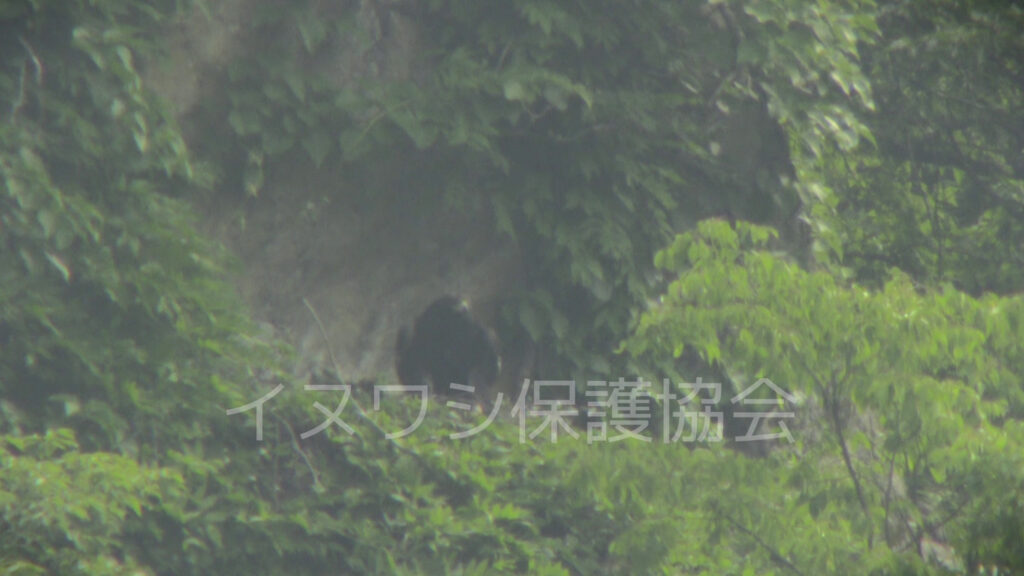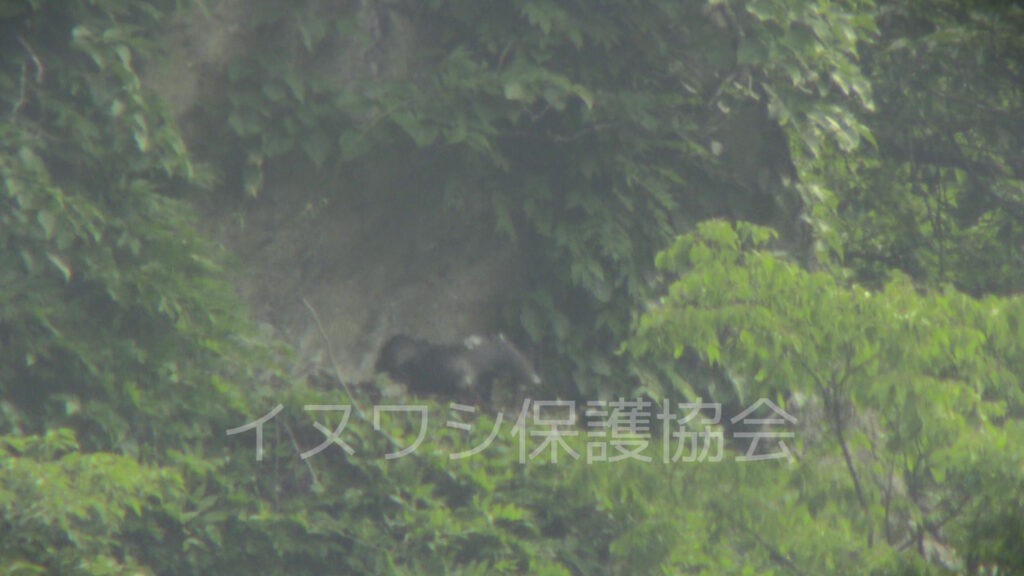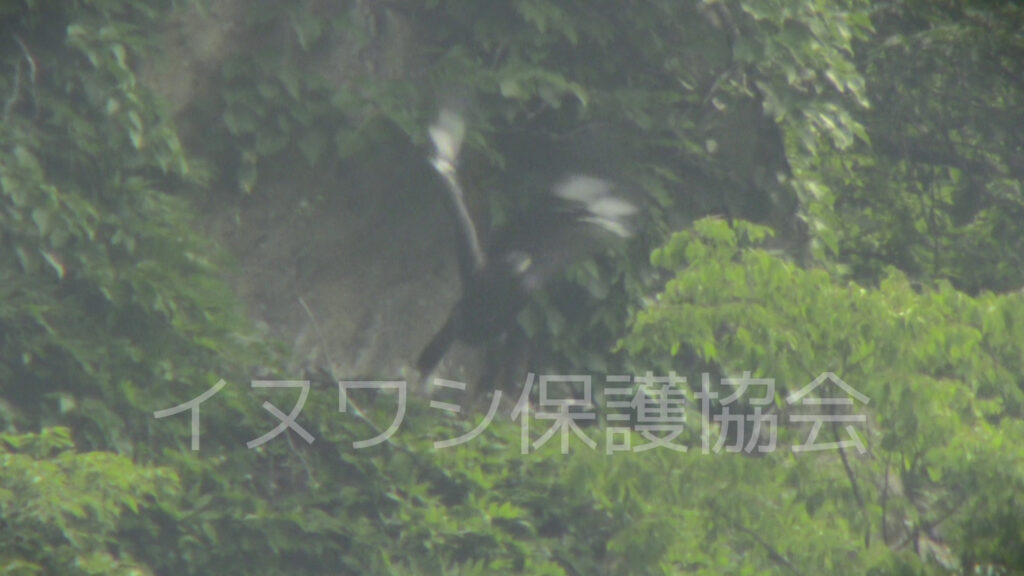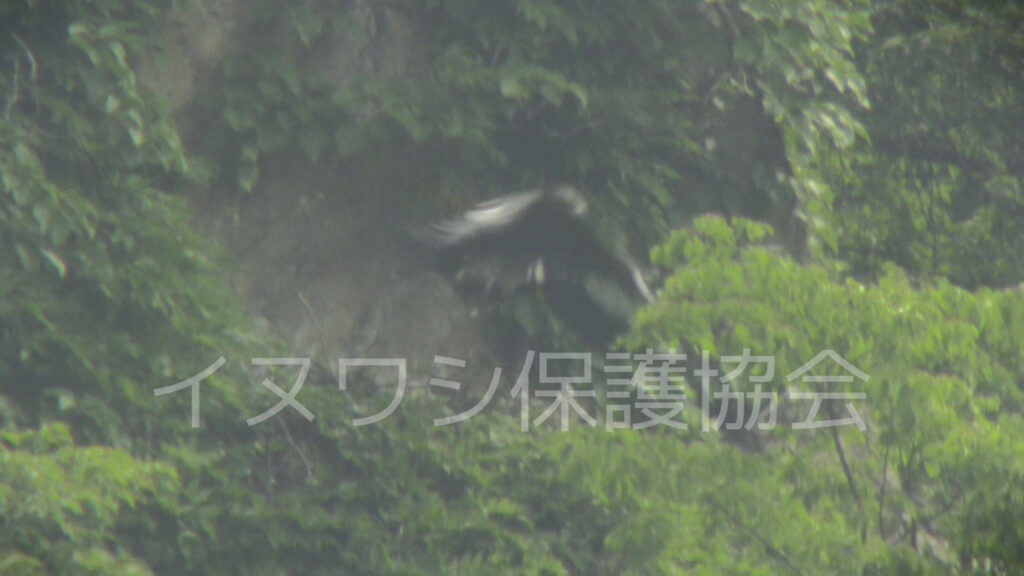Courtship ・Nesting season
During October and December, in order to approach an eagle of opposite gender that has a territory in the surrounding area, it flies high in the wider range around the border of its range of activity, or shows a peculiar way of flying called display flying. Further, a pair preparing to reproduce (a pair managing to get a lot of food) diligently carries materials for a nest in the beginning of November. Sometimes these nests are filled with green colored leaves of coniferous trees.
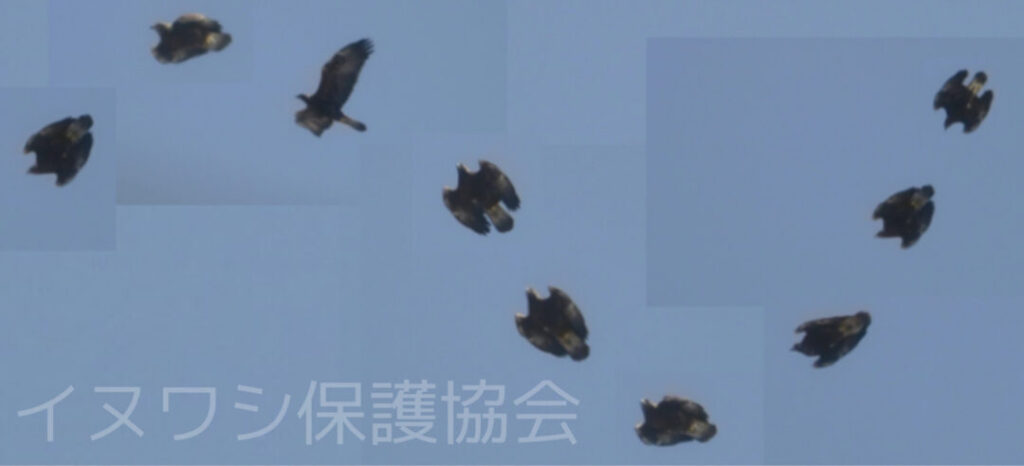
A golden eagle rising and falling sharply shrugging its wings. (a type of display flying)
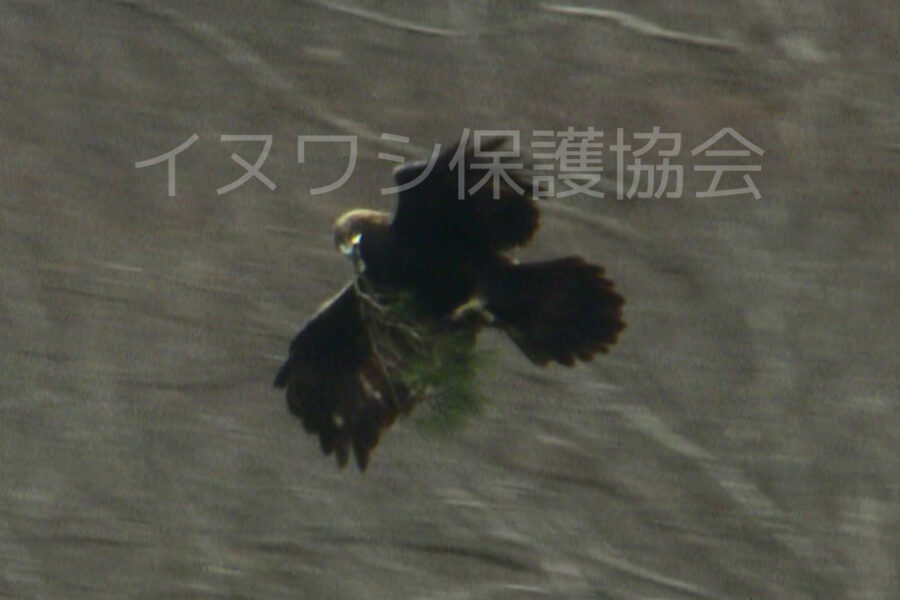
Carrying a branch of green leaves of Japanese red pine.
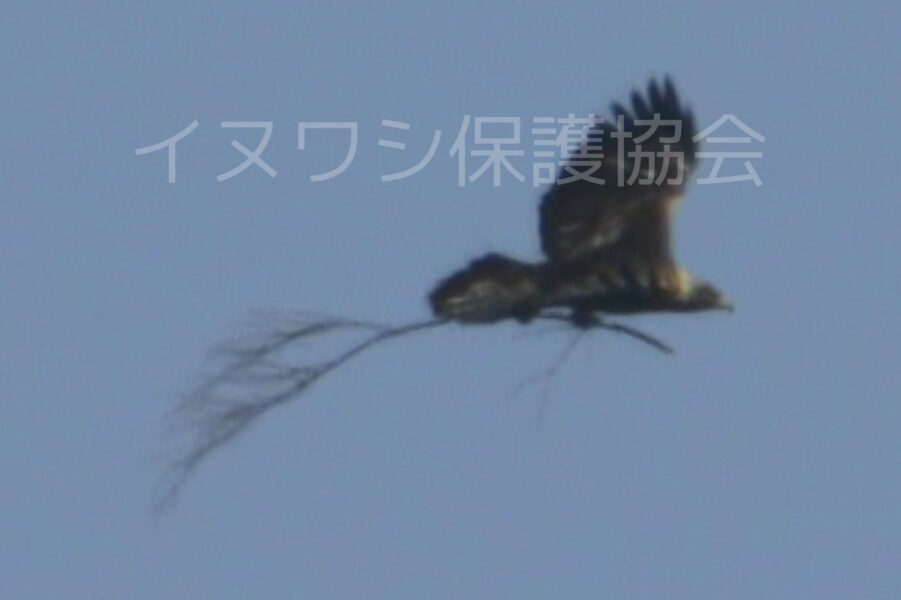
Sometimes it carries a big branch close to 4 meters
After that, during December to January, the time that they spend around their nest will be more. Especially during the morning when the temperature has not risen yet, they actively engage in courtship flight, copulation and carrying materials for their nest. By the way, it is often said that a golden eagle does not do courtship feeding but very rarely, a male eagle brings food to a female waiting nearby their nest.
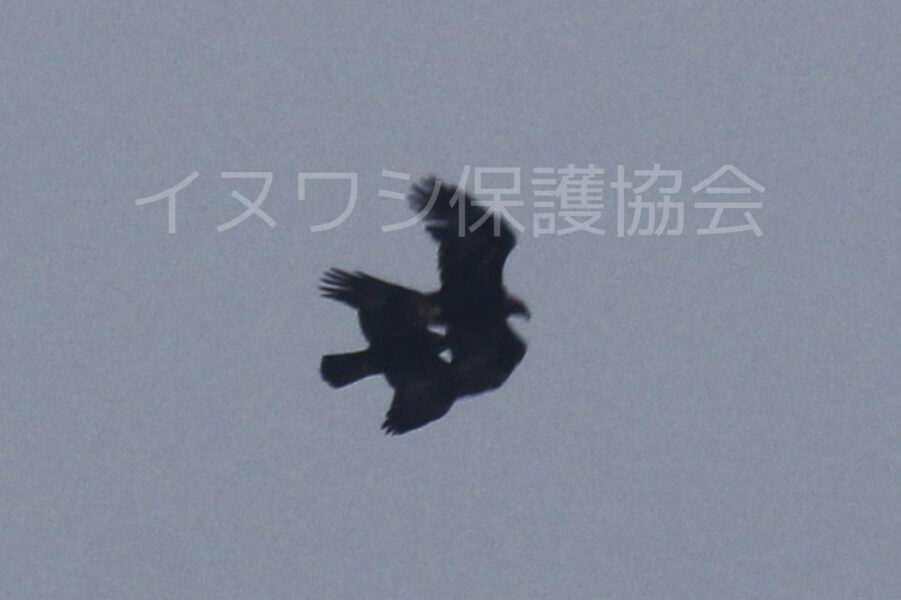
A display of courtship carried out to the degree that they almost overlap seconds one another. (Top-bottom type display flying)
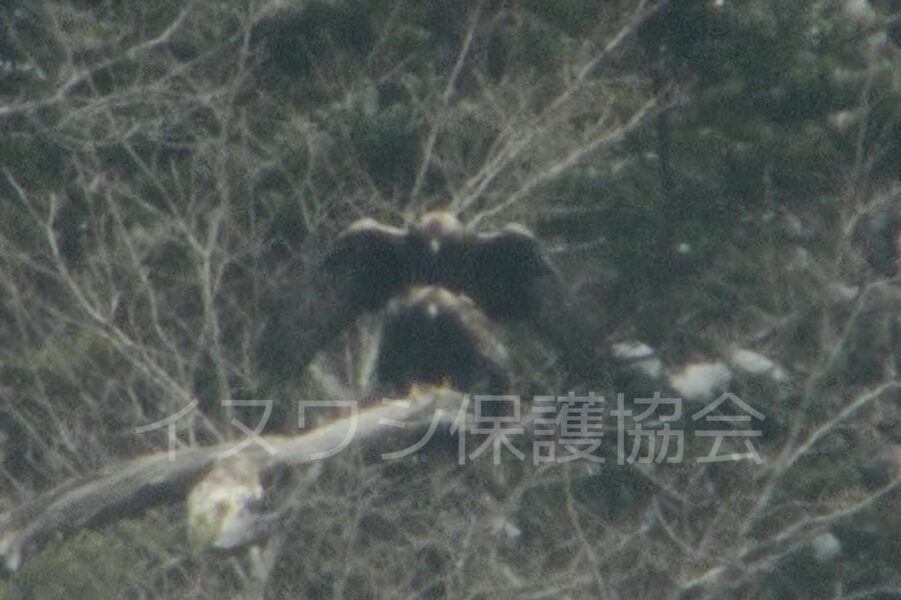
Copulation of golden eagles. Usually, the time a male spends mounting a female is about 15 to 30 seconds
Egg-laying period to egg-brooding period
Around February, a golden eagle lays its eggs at this cold time when there is a thick cover of snow. On the north island, laying of eggs around the 20th of January in an early case and the 28th of March in the latest case were observed. Regarding the time of egg-laying, 4 cases of egg-laying where Ozawa, the chairman, observed right at the moment of laying were all done in the afternoon but there was also a report speculating that egg-laying was done in the morning. Normally, a female lays two eggs at one time but recently, the number of pairs that produce only 1 egg at one time is increasing. Often the second egg is laid 3days after the first one. As soon as the first one is laid, parent eagles will start brooding of eggs (embrace eggs and warm them up). Egg-brooding is carried out without rest for 42 days, with the male and female eagle taking turns. During this period, once every few hours, parent eagles stand up and rotate their eggs with their beak so as to change the warming position. This action is called egg turning. The size of eggs probably gets influenced by the nutritional condition of parent eagles and differ from one to another but it is roughly around 7cm × 5.5cm, that is about twice the size of a chicken’s egg.
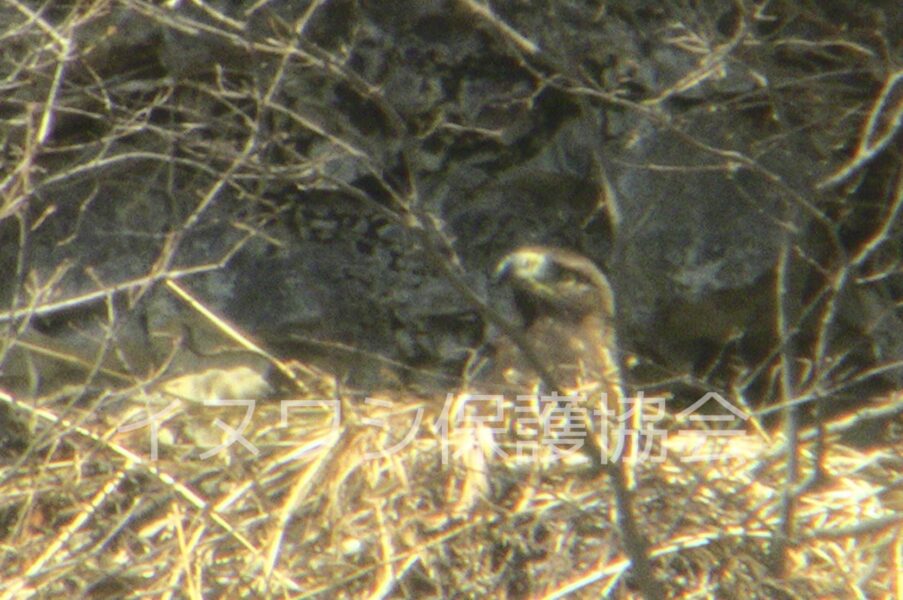
A female golden eagle in the midst of egg-brooding. (I’ll stand firm for 42days!)
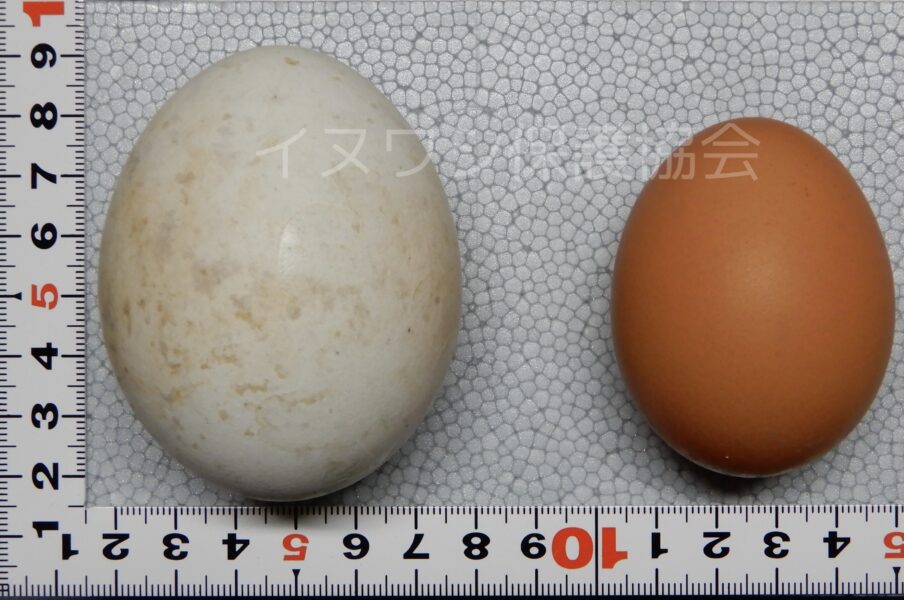
One on the left is a golden eagle’s ・ One on the right is a chicken’s
Hatching period to Brooding period
During the 42days of a long egg-brooding period in March and April, a baby eagle hatches. A baby bird is covered with white down and its neck is in an unstable condition. Then, parent eagles give a baby bird meat plucked into small pieces through mouth-to-mouth feeding and a baby bird grows more and more. During this time, do parent eagles pour things like enzymes into the mouth of its baby to help digestion!? They sometimes pour saliva into the mouth of its baby bird together with a piece of meat. (We are not sure if they do that every single time. We cannot always observe it from a distant.) And when about 20 days has passed since the day a baby eagle was born, black feathers start to grow gradually from the tip of its wings and by around the 60th day, it is completely covered by black feathers. There are differences between each one but after around 30 days, it can bite off food and eat by itself. After around 60 days, it prepares itself for fledging. It practices flapping wings and hunting earnestly inside a small nest (actually a nest is about 1.5m to 2m wide which is pretty big).
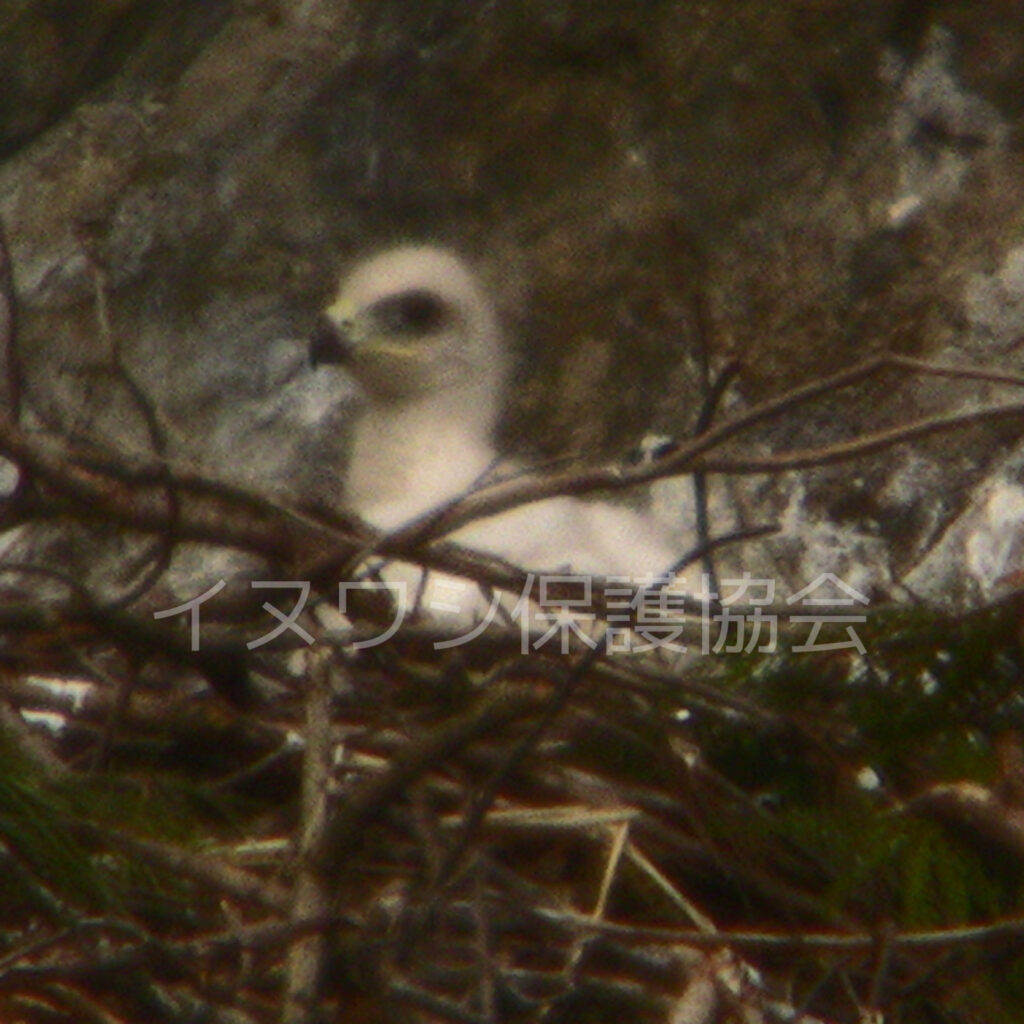
A 24 days old baby eagle

A 29 days old baby eagle
Quill feathers start to grow

A 42 days old baby eagle
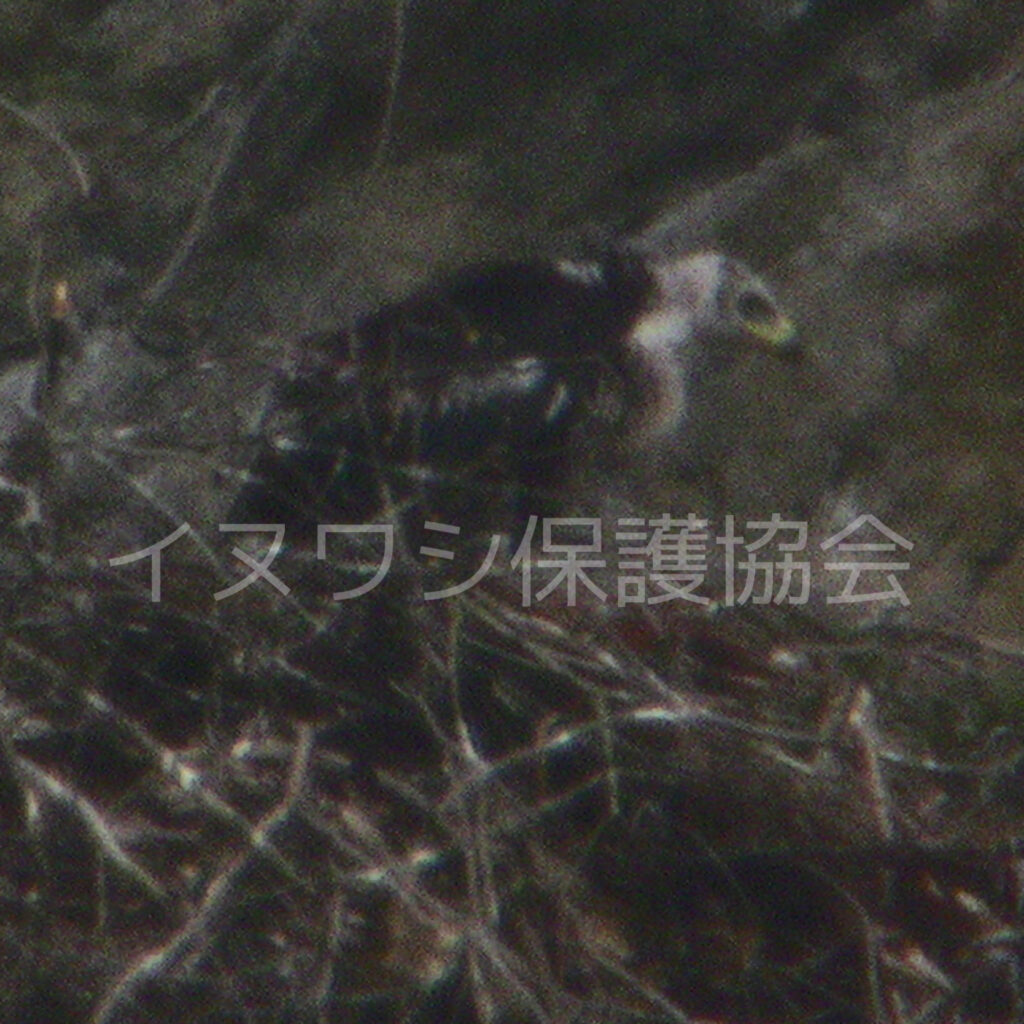
A 48 days old baby eagle
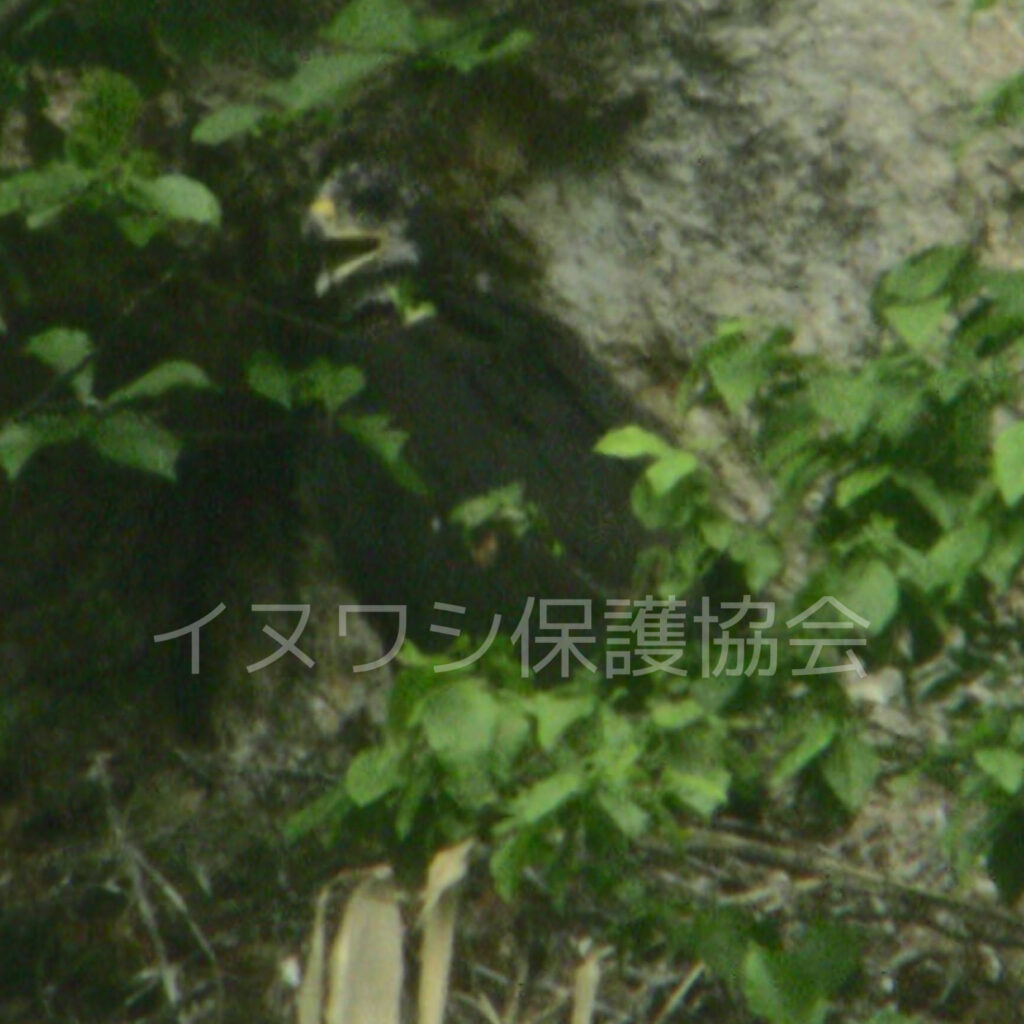
A 65 days old baby eagle
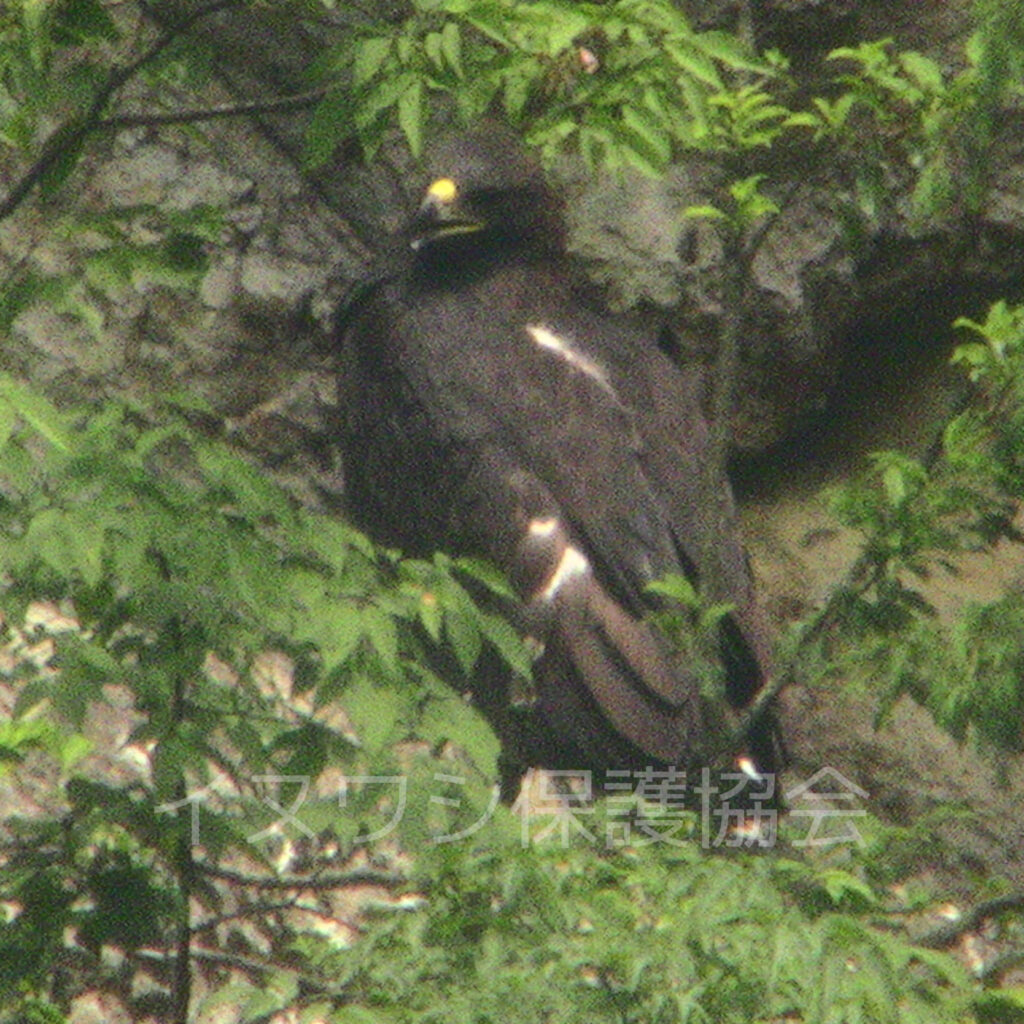
A 92 days old baby eagle
Fledged
When about 120 days has passed since the day a baby eagle was born, when a baby bird turns 70 days old, the time comes for fledgling. There are differences between each one, but when a storm hits, it switches to a fledging mode and flaps its wings violently. And for the first time in its life, it leaves its nest and heads off to the sky flapping its wings with its own will (it is called young eagle after fledging). A nest of a golden eagle is made on a very high cliff or a huge tree so it is like looking down from the top of a building. Just thinking about this makes me scared… However, a baby eagle fledgling makes for determination. As you keep observing, you will see the moment when a baby eagle’s face changes to a young eagle’s face. When the moment of that shift is seen, in no time, fledging will take place! According to the experiences of Ozawa, the chairman, when that shift takes place, a baby eagle will fledge within two days at the latest.
Usually, it fledges in June but according to the observation of Ozawa, the chairman, the earliest one was on the 20th of May and the latest one was on the 5th of July. The age of a young eagle at this time is around 80 days in most cases but the earliest one observed was 71 days old and the latest one was 95 days old.
Regarding the time of fledgling, 10 cases out of 14 cases which is about 70% were in the morning, but from 4am to 6pm, there was no deviation. The ways of fledging vary. Some receive wind and fly off immediately, some just keep sitting until its parents guide it and some even get evicted by its parents.
Period of growing outside the nest
A young bird after leaving its nest gradually widens the area where it can fly. In the beginning, it is several 10s of meters, then several 100s of meters to several kilometers. A young golden eagle very quickly develops the ability to fly. In many cases, it takes about a few weeks until it can fly 1km.
During this period, it gets fed by its parents. Sometimes it looks for food by itself but it takes many months until it can actually hunt by itself. So as parent eagles teach how to hunt, it will learn the skill through many tries. And when it able to hunt by itself, it has to finally leave its parent.
Before the next period of reproduction in Autumn, parent eagles will start to attack their young eagle which is now able to hunt by itself. A young eagle will leave the field of activity of its parents as the attacks get more and more severe.
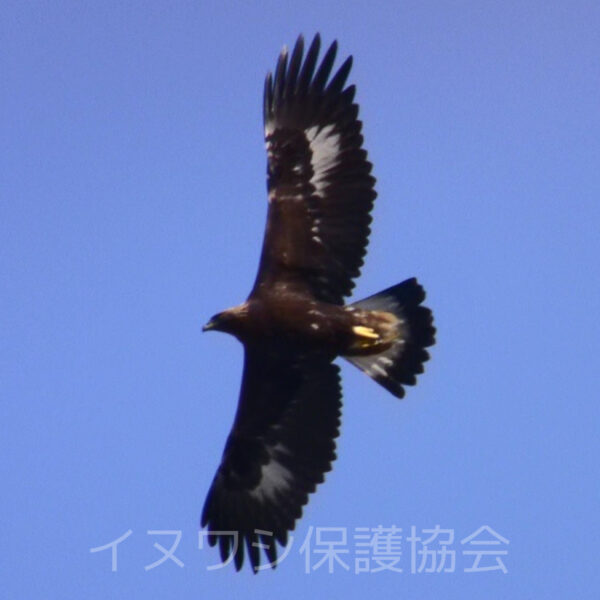
Same young eagles differ in shape and size of white spots
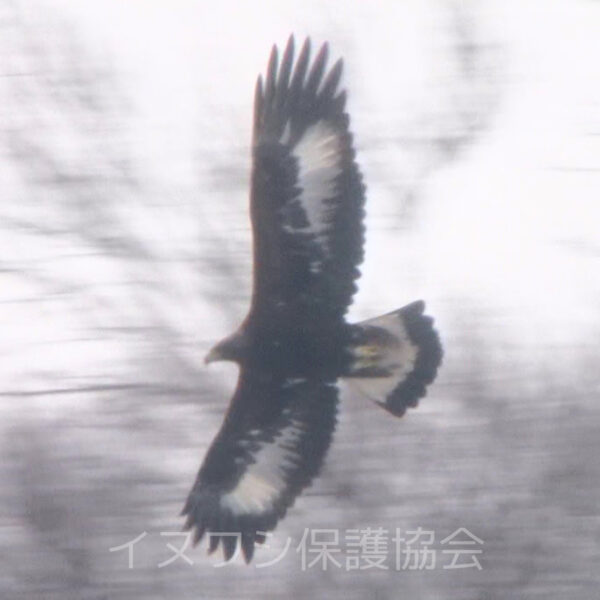
One with big white spots on its wings
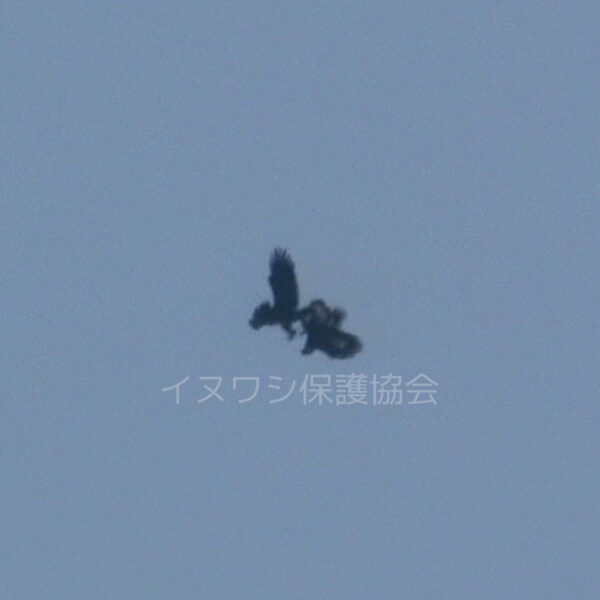
A parent eagle evicting its young eagle
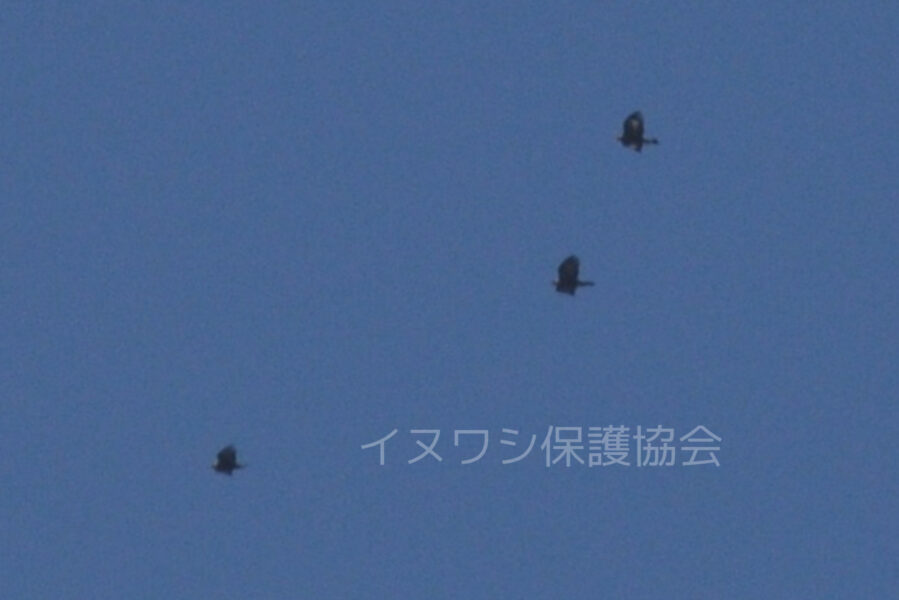
Three eagles consisting of two parents and a kid flying in the big sky.
Afterwards (young eagle)
We don’t know about the details of its activity afterwards for we cannot track it. However, from the many young eagles traveling that we have seen, it seems that it enters other pair’s range of activity and gets evicted, yet it continues hunting and living. And if there is a vacancy in other pair’s habitat (for reasons such as death of a partner) and gets accepted, it can support its life reproducing as a partner.
Afterwards (parent eagle)
Parent eagles after letting go of their kid will prepare storing food and get enough nourishment and repeat the same process of courtship, making nest … Doing this every year is the pattern of a healthy golden eagle.
But due the lack of food in recent years, pair reproduction is repeated every other year when conditions are good and there are even pairs which cannot succeed in reproducing for more than 10 years in bad cases.
